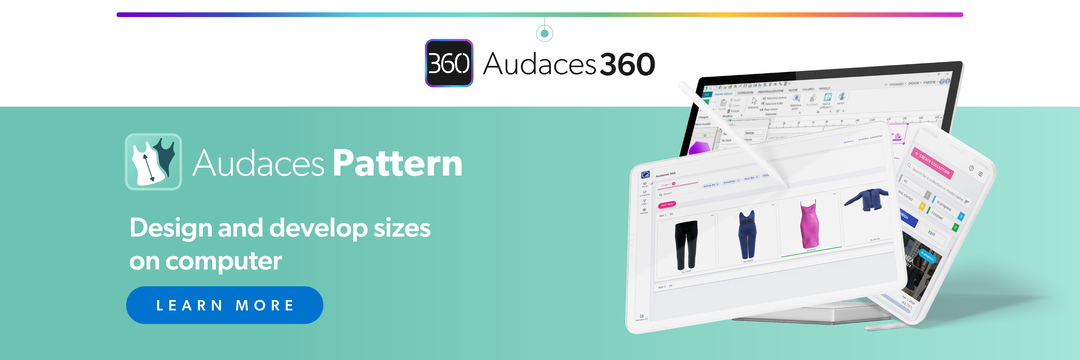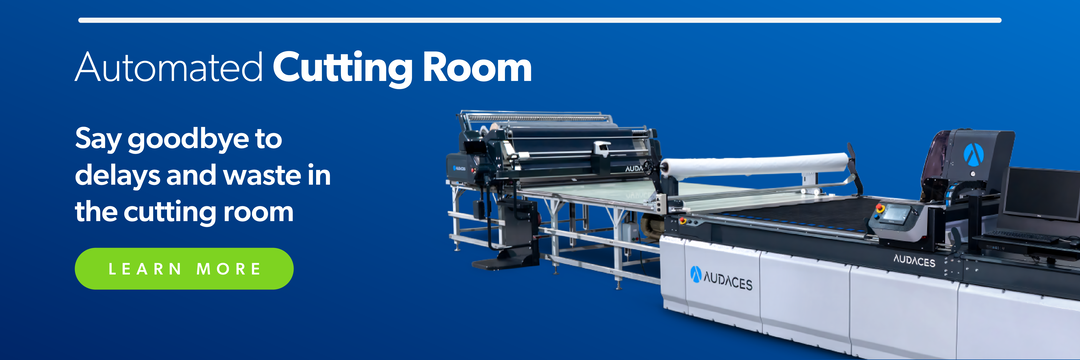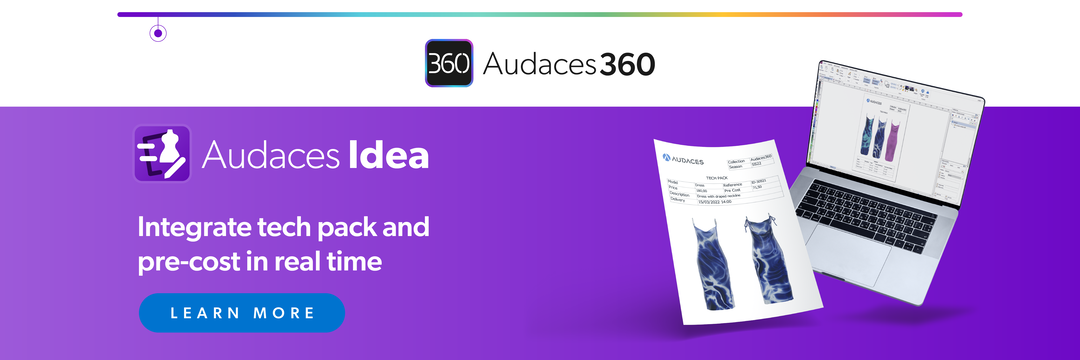Summary
- A smart factory uses digital tools to improve apparel manufacturing. Machines, systems, and people work together to deliver better results.
- This way, fashion businesses can work faster, with fewer mistakes, and less waste.
- Experience the future of the fashion industry with Audaces360. Start your free trial now!
The term smart factory comes from the idea of using technology to improve every step of production. From design to delivery, digital solutions help teams work better.
This is part of a bigger movement called Industry 4.0, also known as the Fourth Industrial Revolution. It refers to the ongoing transformation of industrial processes through the integration of intelligent technologies.
In this article, we’ll show you what a smart factory looks like and how to start building yours. We aim to make it easy for you to come along on this journey, enabling you to perform at your best.
Happy reading!
Sumário
Why become a smart factory?
A smart factory can make your business work better. With the right solutions, your team can save time and avoid mistakes. Machines and systems talk to each other to keep everything on track.
You get more control over the entire process. From creation to sewing, you can see what’s happening in real time. That means faster changes and better results.
In addition, your production line becomes more flexible. You can make small batches or big ones without slowing down. It’s easier to meet customer needs and follow new trends.
Smart factories also help reduce waste. You use only what you need and make decisions based on real information. That’s good for your business and even better for the planet.
Learn more: Explore the benefits of industrial technology in the fashion sector
What is a smart factory?
A smart factory uses technology to connect people, machines, and systems. Everything works together in one smart flow, streamlining every step and optimizing resources.
In this setup, data analysis plays a big role. It helps you understand what’s working and what’s not. With good data, you can improve your results every day.
What’s even better is that today’s technology has the ability to store and process large amounts of data. The information about all the stages of the manufacturing process is saved and will be considered.
This allows you to make the best decisions for your business, leading to continuous performance improvement.
Moreover, modern manufacturing systems are fast, clear, and easy to manage. With the right setup, even complex tasks become simple. That’s the power of a smart factory.
How did this new industrial environment emerge?
The world is changing fast. Fashion trends move quickly, and customers want faster service. Old ways of working can’t keep up, and this is where the smart factory concept emerges.
New tools and software started to appear. They made it easier to plan and produce. Then came sensors, robots, and smart systems that could connect everything.
The big shift came with machine learning and Artificial Intelligence. These solutions let systems learn from data and make better choices over time. That opened a new door in the way we manufacture.
Now, smart factory technology doesn’t just produce—it actually thinks. It finds problems, suggests solutions, and even adjusts on its own.
This is the future of fashion manufacturing, and it’s already happening!
How does a smart factory work?
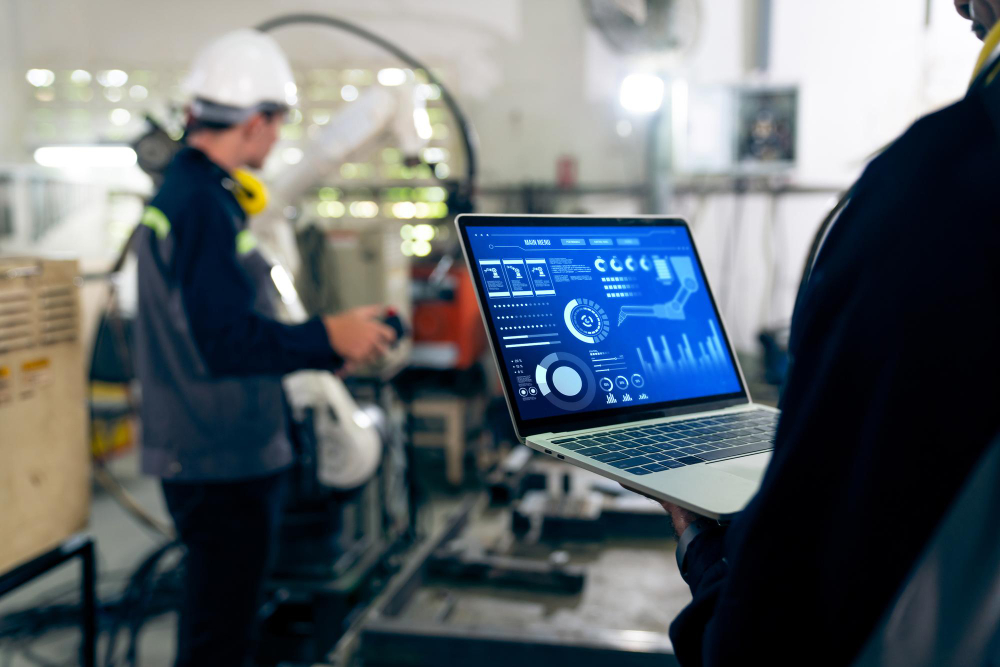
Data availability
Smart factories collect data all the time. Intelligent hardware and software send updates every second, providing a complete view of your operations. You can track fabric use, machine speed, and much more.
When data is always available, it’s easier to improve. You can make small changes every day that lead to big results over time.
Information accessibility
Having data is good, but it must be easy to read. A smart factory organizes information in clear dashboards. That way, everyone on the team knows what’s going on.
You don’t need to search through files or wait for reports. With just a few clicks, you get the answers you need.
Clear information also means better teamwork. Each department can see the same data and work toward the same goals.
Learn more: Discover how to enhance productivity in the textile business chain
Machine learning
Machine learning helps the factory improve on its own. It finds patterns in the data and learns from them. Over time, the system gets smarter.
The more the system learns, the better it gets. With machine learning, your factory keeps growing—even when you’re not there.
Decision-making
In a smart factory, decisions are based on facts. You don’t need to guess or rely on incomplete reports because the system shows you what’s happening in real time.
This helps managers and owners act fast. You can change plans, fix issues, or improve steps in the process.
Keep in mind: good decisions come from good data. And in a smart factory, that data is always clear, reliable, and ready to use.
Want to know how to make the best decisions to boost productivity in your apparel manufacturing? Download our free content and start exploring it now!
7 technologies that are part of a smart factory
Smart factory and smart manufacturing work closely together. They need each other’s powerful tools to function effectively.
The following technologies are the cutting edge for automating your business and unlocking its full potential:
1) Digital manufacturing
Digital manufacturing uses software to plan and control production. You can design, test, and improve everything using digital tools before making a single item.
This helps reduce errors and speeds up production. You can simulate how a product will look and work before even making a physical sample.
Learn more: Why simulate the 3D fit of garments before production?
2) Robotics
Robots are machines that help with physical tasks. They follow precise instructions and don’t get tired. This keeps the process fast, safe, and reliable.
They are especially effective for repetitive tasks, as they can do them quickly and accurately. You see them a lot in large-scale industries for picking, sorting, packaging, and palletizing products.
3) Artificial Intelligence (AI)
AI helps machines and systems think like people. In the creation phase, for example, it can spot patterns, make predictions, and even turn sketches into realistic images.
In a smart factory production, AI checks for delays or errors. It can also help decide the best way to use machines and materials.
Artificial Intelligence gets better over time. The more it learns, the smarter and faster your factory becomes.
Learn more: How to use Artificial Intelligence design in your fashion creation
4) Industrial Internet of Things (IIoT)
IIoT connects machines, tools, and devices through the internet. These devices talk to each other and share data in real time.
It’s easier to track what’s happening in every part of the factory. You’re able to see when a machine needs predictive maintenance or requires some adjustments, for example.
This technology makes the whole process clearer and faster, helping your team work better every day.
5) Cloud Computing
Cloud computing stores your data and systems online. That means you can access them anytime, from anywhere.
You don’t need to worry about losing files or buying big servers. The cloud keeps your tools safe, up to date, and always available.
It also helps different teams work together. Everyone can see the same information and stay in sync.
6) Big Data
Big Data means collecting large amounts of information. In a smart factory, this includes everything from machine speed to fabric use.
With the right solutions, this data becomes very useful. You can find problems, spot trends, and plan each step of a complete collection.
To put it concisely, it turns numbers into smart choices, allowing you to see the full picture.
7) Cybersecurity
Cybersecurity protects your systems and data from attacks. It keeps your designs, reports, and tools safe from hackers. Efficient cybersecurity also keeps your machines running without risks.
With strong protection in place, you can work with confidence, knowing your information is safe.
How to become a smart factory?
Start by looking at your current processes. Understand where the problems are. This will make it possible for you to identify what needs changing.
Then, bring in the right technology. Use tools that collect data, connect systems, and help your team work better. Start small and grow step by step.
Finally, keep improving. A smart factory learns and adapts. The more you use technology, the smarter your factory becomes.
What are the benefits of a smart factory?

Improved quality
Smart factories use data to check every part of the process. This helps find and fix problems before they grow.
When quality improves, customers notice, making your brand grow stronger.
Learn more: How can technology enhance the quality of textile products?
Job satisfaction
We already know that technology won’t replace people. It supports us, reducing stress and heavy work.
Workers have better tools and more control, being able to focus on creative and skilled tasks. This makes work more enjoyable, and people feel proud of what they do.
Environmental sustainability
A smart factory produces less waste, saving raw materials. The system tracks everything in real time, meaning you can stop problems early and cut down on waste.
Moreover, AI-powered systems can optimize energy usage by adjusting machinery operation schedules based on production needs and occupancy.
Learn more: How to achieve cleaner production in clothing manufacturing?
Process autonomy
Machines and systems in a smart factory can work on their own. This is because they follow instructions and adjust as necessary, as well as perform repetitive tasks by themselves.
With more autonomy, the whole production becomes smoother. You gain more time to plan and grow your business.
Become a smart factory with Audaces solutions
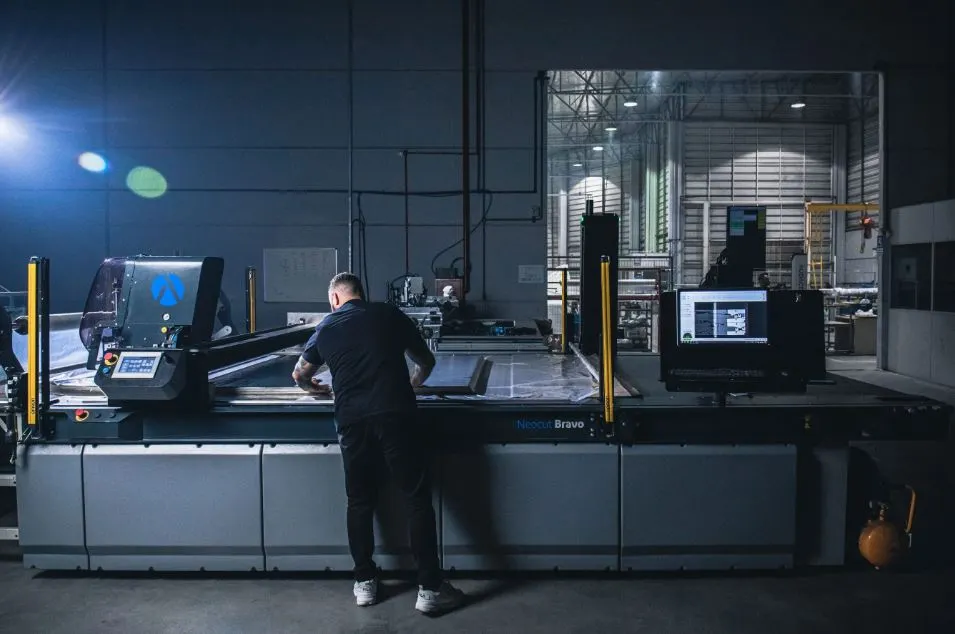
Audaces360
Audaces360 integrates cutting-edge digital innovations to optimize workflows in the textile and apparel industry.
It caters to companies of all sizes and types, offering the flexibility to scale with your business needs.
All solutions were carefully developed to address the specific challenges of the field. They streamline the design and production processes, saving valuable time and resources.
The platform boasts a comprehensive range of functionalities, including pattern making, marking, collection management, vector drawing, and 3D creation.
In addition, a fashion Artificial Intelligence to assist you along the way.
Audaces Cutting Room
By embracing cutting-edge technology, garment manufacturers can achieve significant improvements in the production process. From greater design flexibility to enhanced efficiency and reduced costs.
This is where Audaces Cutting Room steps in! Our experts will thoroughly assess your company’s needs and create a comprehensive report.
Then, our team will develop a personalized project to achieve your goals and unlock your company’s full potential.
Rely on Audaces’ cutting-edge machinery to automate your production process. Achieve impeccable cuts on curves and details, speeding up your deliveries and minimizing fabric waste through automation.
Did you find this article helpful? Let us know what you think in the comments!
FAQ
A smart factory can make your business work better. With the right solutions, your team can save time and avoid mistakes. Machines and systems talk to each other to keep everything on track.
A smart factory uses technology to connect people, machines, and systems. Everything works together in one smart flow, streamlining every step and optimizing resources.
Digital manufacturing, robotics, Artificial Intelligence, Internet of Things, Cloud Computing, Big Data, and Cybersecurity.



